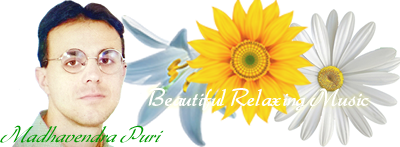Harp Music
There are a plethora of entrances into the heart and soul. There is a plethora of gates that lead us back to the raw purity of consciousness, presence, and connection in our lives. One of these gateways is the harp, which is believed to be the most ancient of stringed instruments.
For thousands of years, the harp has been admired for its soothing timbre, angelic sound, and mystical connections; it has also been recognized as a powerful healing instrument on every level—physically, mentally, emotionally, energetically, and spiritually—and has been woven throughout some of the earliest traditions. In this immense cosmos, which lives both physically and inside, beneath the layers of our skin, the vibrations of the strings awaken rivers of sound that flow through it.

Ever listened to your favorite song and felt a sense of being captured by each note, as if you were dissolving into the vibrations with each note? As the music begins to play, your mind becomes quiet, and you are transported into a trance-like condition in which the song delights your entire self.
The rapture of music, as well as its complex inherent characteristics—sonic patterns, momentum, resonance, rhythms, repetitions, and the mysterious ways in which it elicits emotion—all serve as a meditative gateway, an entryway that leads us into the gaps between thoughts, the silence within the sounds, and the calm within the chaos that is our everyday lives.
Effect of Good Vibrations
Lorin Roche, Ph.D., a meditation instructor, and author, explores the interplay of song and silence in his translation of the ancient yogic classic known as the Radiance Sutras (Vijnana Bhairava Tantra), which was originally written in Sanskrit. ‘When a song comes to an end, the quiet throbs, and we might follow that pulsing into a silence that is louder than the music,’ the author says. According to Sutra 18, verse 43, we are invited to “tend to each note, each chord, rising up from silence and dissolving again, vibrating strings lure us into the wide resonance of the heart.” “Tend to each note, each chord, rising up from silence and dissolving again,” the verse says.
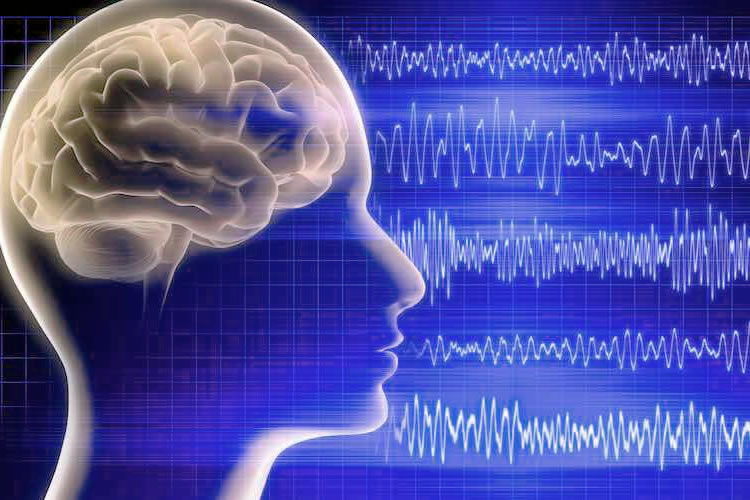
The act of paying attention to sound and employing the ability to listen as a meditation anchor allows the properties of music to freely flow through our bodies. There is a “coming home” offered by these currents of receptivity; it is a holy return to complete present, in which we can attune to the innate wisdom that lies within our hearts and bodies.
According to the principles of quantum physics and the understanding of current science, we can now state that everything is made up of vibrations or energy of various kinds. Vibration or movement can be expressed in a variety of ways, including matter, music, light, thoughts, emotions, our body, and any experience we have. We move and oscillate in response to the vibrations that move through us, much as sound passes through water. In response to particular frequencies that we listen to and hear, the wavelength of that frequency pulses through the air and into our bodies, causing our cells, tissues, and organs to vibrate in sync with that tone.
Soothing Effects of Harp Music
Harp music, with its expansive pitch range, a calming pallet of tones, and harmonic frequencies, settles, harmonizes, and eases us into profound, restorative states of deep relaxation and meditation. The harp, at its core, is a source of comfort.
Clinical studies are being conducted to quantify the therapeutic benefits of live harp music, which include regulating stress hormones, equalizing and slowing down brain waves, inducing restful sleep, relieving physical and emotional suffering, and assisting listeners in accessing peaceful states conducive to healing, among other things. It is possible for self-healing to take place in all elements of our being when the body’s restorative mechanisms are in a state of balance, wholeness, and equilibrium.
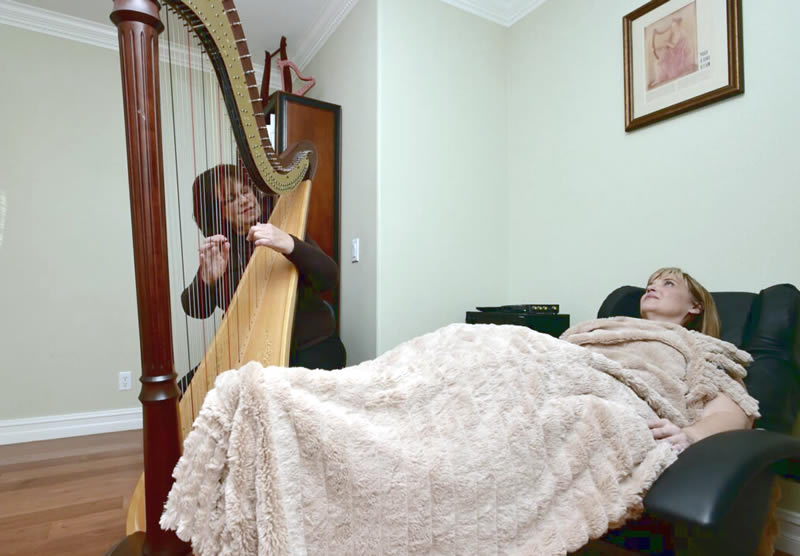
The journey home begins when we allow ourselves the space and time to immerse ourselves in a calm setting that includes live music, sound meditations, gentle exercise, and guided relaxation techniques. It is this combination of sound and quiet, along with movement, that produces a vibrational rhythm that begins to unlock the intrinsic wisdom of the body and heart, allowing it to awaken and evolve, as well as revitalise. At the end of the day, music has the ability to reach a section of the soul that no one else or anything else can.
Harp Therapy
Harp therapy can be defined as any sort of therapy that makes use of a harp. Practically speaking, listening to harp music is frequently the most important component of harp therapy, however, some forms of music therapy actually propose that patients play the instrument themselves. Among the possible explanations for the effectiveness of harp, therapy is the specific resonance of the instrument as well as the general psychological advantages of listening to music in its various forms.
In general, the benefits claimed by proponents of this sort of therapy include stress and pain reduction rather than relief from a specific ailment or illness-related condition. This form of treatment is often regarded as experimental, and therefore may not be available in all standard medical facilities. The precise method through which harp therapy is supposed to function varies according to the sort of therapy that is being used to treat the patient. An example of one of the most prevalent sorts is when a harpist performs directly for a patient while also keeping an eye out for symptoms of tension or satisfaction.
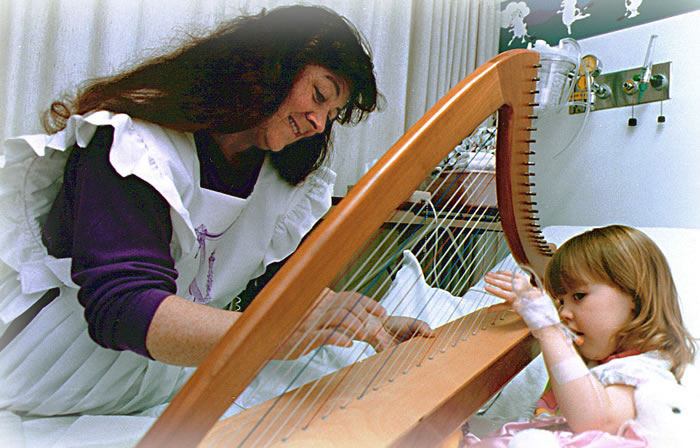
Because of the inner tranquility that is brought about by music, therapy may be more effective in this situation. A regular occurrence is for persons who receive this treatment to heal more quickly, which is consistent with the link between pain, stress, and healing.
Harp Therapy through Soothing Harp Music
Another sort of harp therapy that is commonly used involves the patient performing music. Aside from the fact that harps are interesting instruments to play, the stimulation provided by demanding music can help to enhance morale and coordination. It is believed that this sort of therapy is effective because it relies on both the sound properties of the harp, which are pleasant to listen to and the physical movement of playing the harp.
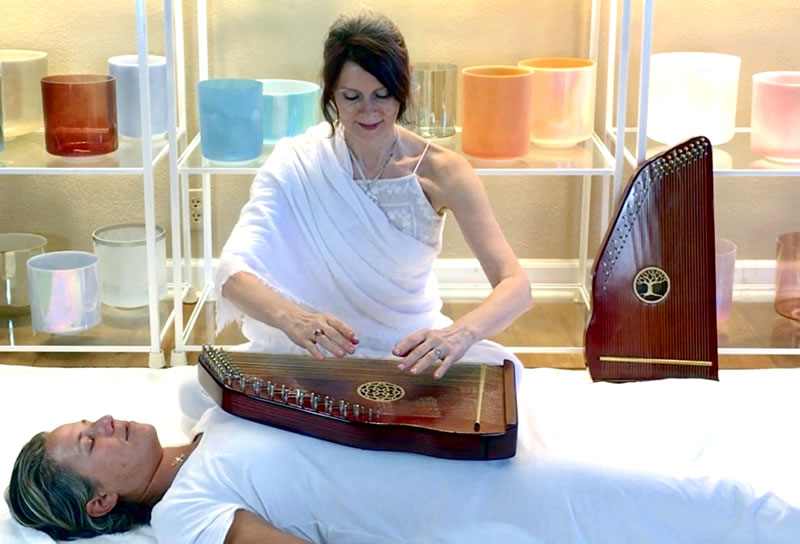
The effectiveness of harp therapy is dependent on how it is administered and the circumstances surrounding the treatment. It is nearly always necessary to employ this sort of therapy in conjunction with other types of treatment, making it difficult to pinpoint the specific benefits of the harp. Efforts have been made to develop specialist training programs for harp therapists in order to increase the credibility of this sort of therapy, but there is currently no certification available for harp therapists. A more general classification for this sort of therapy is that of music therapy, which is a discipline in which a person can receive specialized qualifications.
One of the difficulties with harp treatment is that it is dependent on part on the person doing the listening. If a person despises harp music, it is quite unlikely that this sort of therapy will be effective for them. The majority of the work done by music therapists takes place in the patient’s brain, rather than immediately between the sound patterns and the body. In order for this sort of therapy to be successful, the patient must be well adjusted and receptive to musical stimulation.
